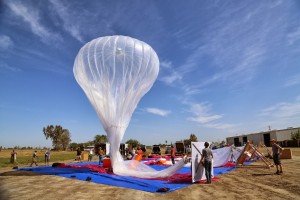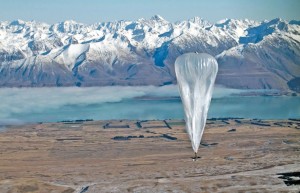Google X's Project Loon Reaches the Stratosphere
-
-
slice.mit.edu
- 3
Filed Under
Recommended

However, they do worry about the 66 percent of children in the world without access to school, sick patients in the developing world without access to doctors, and farmers or entrepreneurs without access to data and mentorships.
As director of product management and chief technical lead at Google X’s Project Loon, Cassidy and DeVaul are working to create a simple way to get Internet access, and the services that can accompany it, to these people.
All it will take is a few thousand balloons.
Google X began as Sergey Brin’s incubator for long-shot tech ideas like wearable computing and the driverless car. It’s now aiming to improve life around the world through projects like Loon and Solve for X.
In 2011, Cassidy, DeVaul and their team began testing prototypes of balloons in California’s Central Valley, balloons that could relay Wi-Fi signals to satellite dish-like receivers in homes. After many failed tests, they found a model that worked on a small scale. On that team were alums Sameera Ponda '04, SM '08, PhD '12, Ed Keyes '05, Brad Rhodes '92, SM '96, PhD '00, Baris Erkmen '01, MNG '03, PhD '08, Keith Bonawitz '02, MNG '03, PhD '08, and Jim Morash '01, MNG '08.
This summer over rural New Zealand, Loon had its sea trials as the team launched dozens of balloons to relay Internet access to farmers and families on South Island.
The balloons, which drifted over the skies of New Zealand at 65,000 feet, are made of polyethylene plastic, powered by solar panels, and operated remotely. Far below, the team mounted basketball-shaped receivers to homes and worked with families to test their connections. On this small scale, and with a price tag far cheaper than satellites, Loon has worked.
Cassidy and DeVaul are back in the Central Valley refining Loon this fall, with hopes for a larger-scale launch, around the world at the 40th parallel, which will bring Internet access to New Zealand, Australia, Chile, and Argentina.
Cassidy, who studied aerospace engineering at MIT, has always innovated with technology. He founded the search engine Direct Hit, which sold to Ask Jeeves in 2000 for $500 million, and the social network Ruba, which he sold to Google. At Google, Cassidy worked on social media search before being named lead on Project Loon.
“I’m a capitalist at heart,” Cassidy told the HBS Bulletin. “I believe entrepreneurs who create useful products or services are contributing something of benefit to society. Working in Silicon Valley, where so many companies are developing ideas to make people’s lives more fun or more productive, is an amazing opportunity.”
“At Google, the scale of your impact is much bigger. The first day we launched Social Search, we reached a billion people! That’s pretty cool,” he said.

DeVaul, who studied architecture and media arts at MIT, worked in technology advancement at Apple before joining Google X. His has been a career of trial and error, a process he’s grown well accustomed to.
“If we want innovation, it is very important to have the freedom and the possibility of being wrong,” Devaul said in a Vedux interview. “A lot of things we try do not work. And we try, because it’s always worth trying.”








Comments
domainerr
Sun, 11/03/2013 11:04am
Googloon might be the right name for the google balloon since Google+balloon=Googloon
Tim Meyer
Sun, 10/27/2013 9:15am
I think the bigger problem is getting electricity to the target market. If it low cost tablets, they will need some sort of WiFi modem, is there power in most villages for these things?
Emil M Friedman
Thu, 10/24/2013 9:36pm
If any of them drift to too low an altitude, is there a mechanism to avoid being hit by airplanes?